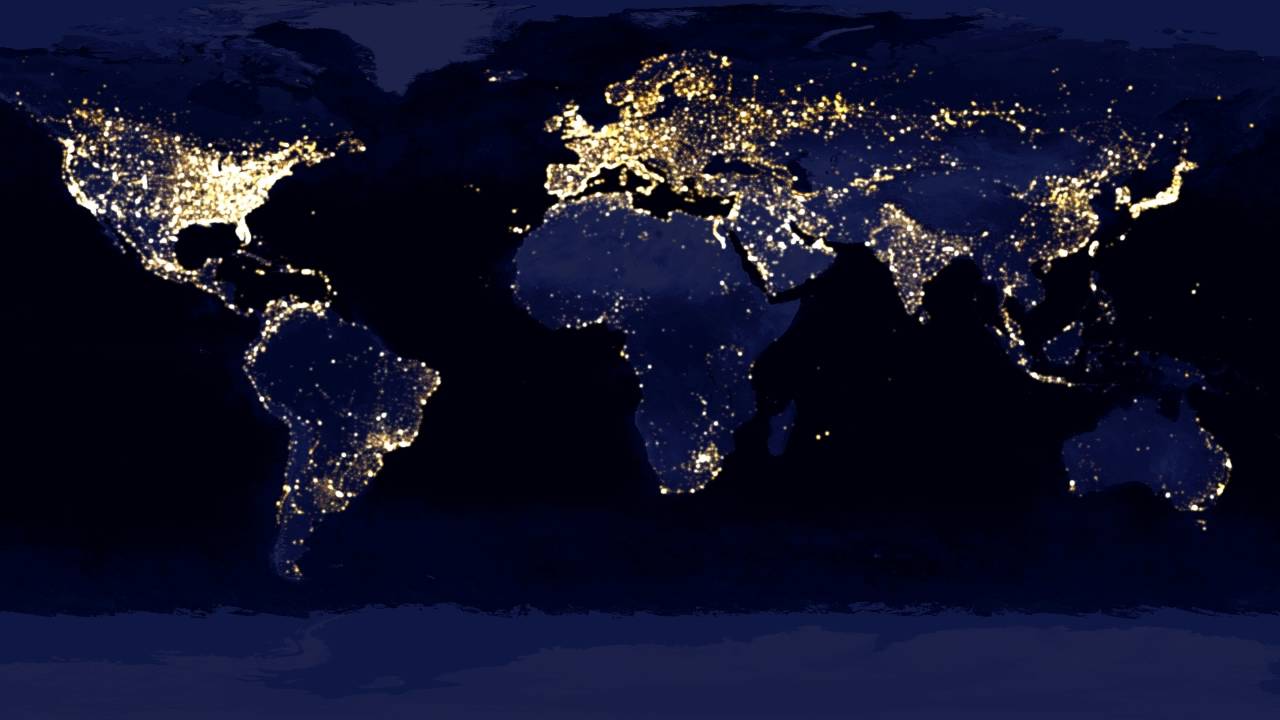Using Night Light Emissions For The Prediction Of Local Wealth - How They Are Helpful
Using night light emissions for the prediction of local wealth may accurately forecast new locations inside a given nation as well as provide predictions for previously undiscovered countries based on their light emissions. In poorer nations, where economic data is frequently not accessible or of low quality, the amount of light produced at night might serve as a proxy for such characteristics.
Author:Suleman ShahReviewer:Han JuDec 05, 202231 Shares557 Views

Using night light emissions for the prediction of local wealthmay accurately forecast new locations inside a given nation as well as provide predictions for previously undiscovered countries based on their light emissions. In poorer nations, where economic data is frequently not accessible or of low quality, the amount of light produced at night might serve as a proxy for such characteristics.
Studies have shown this for huge grid cells, administrative divisions, and country-level resolutions. More than 34,000 observations at the level of villages or neighborhoods were collected using large-scale, geo-referenced data from the Demographic and HealthSurveys to cover 39 less developed, predominantly non-democratic nations. The findings were presented by N.B. Weidmann in Journal of Peace Research.
The number of streetlights is a major indicator of a community's prosperity. Other fields may benefit from this research. In addition to city centers, it may be used in other locations. Its approach is simple to adopt and adapt to new contexts. The outcomes are remarkable.

Combining satellite imagery and machine learning to predict poverty
Benefits Of Using Night Light Emissions For The Prediction Of Local Wealth
Differences in resource allocation and economic progress may be reflected in the shifting emission patterns of night lights. The accuracy of these numbers is so high that they may be used alone to make educated guesses about the financial well-being of a community.
This technique of analysis is especially helpful for nations where comprehensive surveys have never been conducted. It's a useful instrument for gauging the monetary repercussions of war, since it can be used to make forecasts for nations about whom scholars know little to nothing.
The amount of light emitted at night is a reliable indicator of affluence. Nighttime lighting has been linked to many other indices of affluence, although it has little predictive value in international comparisons. A study found that for every doubling of family wealth, three more kids out of every hundred would enroll in elementary school.
Additionally, the number of women who get medical assistance during delivery, the average age at which a woman gives birth, and the number of adults who have completed high school all rise by a factor of two as family income rises.
Satellite imagery can fill in data gaps in remote regions and help us compare nations' economic development. Night light emissions as a surrogate for local prosperity, however, comes with a number of drawbacks.
It is important to account for disparities in country income since there is no universal correlation between nightlight emissions and prosperity. For instance, although almost all of Sweden's urban areas are lighted up after dark, less than 5% of the United States' urban areas are.
People Also Ask
What Is Night Light Data?
The visible lights from Earth collected by satellites at night make up the bulk of the night-light data. Many economists across the globe now utilize the data, which offers a numerical assessment of the brightness of the planet at night, to analyze economic activity.
Which Night Light Data Should We Use In Economics?
In metropolitan areas, spatial disparity is likely underestimated by the Defense Meteorological Satellite Program night lighting statistics. Top-coding Pareto-adjustment has a little impact since blurring is a more serious problem. More precise Visible Infrared Imaging Radiometer Suite night light data, particularly for smaller geographical aggregates.
Where Are Night Light Emissions Used?
Economists are increasingly using satellite data on nighttime lighting as a proxy for local economic activity, particularly in developing nations.
Final Words
Using night light emissions for the prediction of local wealth may be used as a proxy for a family' whether or not higher illumination indicates more wealth varies from country to country. It has been shown that a larger percentage of electricity-free homes is linked to a country's level of prosperity. Also predicted is the percentage of kindergarteners and adults with some college under their belts.

Suleman Shah
Author
Suleman Shah is a researcher and freelance writer. As a researcher, he has worked with MNS University of Agriculture, Multan (Pakistan) and Texas A & M University (USA). He regularly writes science articles and blogs for science news website immersse.com and open access publishers OA Publishing London and Scientific Times. He loves to keep himself updated on scientific developments and convert these developments into everyday language to update the readers about the developments in the scientific era. His primary research focus is Plant sciences, and he contributed to this field by publishing his research in scientific journals and presenting his work at many Conferences.
Shah graduated from the University of Agriculture Faisalabad (Pakistan) and started his professional carrier with Jaffer Agro Services and later with the Agriculture Department of the Government of Pakistan. His research interest compelled and attracted him to proceed with his carrier in Plant sciences research. So, he started his Ph.D. in Soil Science at MNS University of Agriculture Multan (Pakistan). Later, he started working as a visiting scholar with Texas A&M University (USA).
Shah’s experience with big Open Excess publishers like Springers, Frontiers, MDPI, etc., testified to his belief in Open Access as a barrier-removing mechanism between researchers and the readers of their research. Shah believes that Open Access is revolutionizing the publication process and benefitting research in all fields.

Han Ju
Reviewer
Hello! I'm Han Ju, the heart behind World Wide Journals. My life is a unique tapestry woven from the threads of news, spirituality, and science, enriched by melodies from my guitar. Raised amidst tales of the ancient and the arcane, I developed a keen eye for the stories that truly matter. Through my work, I seek to bridge the seen with the unseen, marrying the rigor of science with the depth of spirituality.
Each article at World Wide Journals is a piece of this ongoing quest, blending analysis with personal reflection. Whether exploring quantum frontiers or strumming chords under the stars, my aim is to inspire and provoke thought, inviting you into a world where every discovery is a note in the grand symphony of existence.
Welcome aboard this journey of insight and exploration, where curiosity leads and music guides.
Latest Articles
Popular Articles